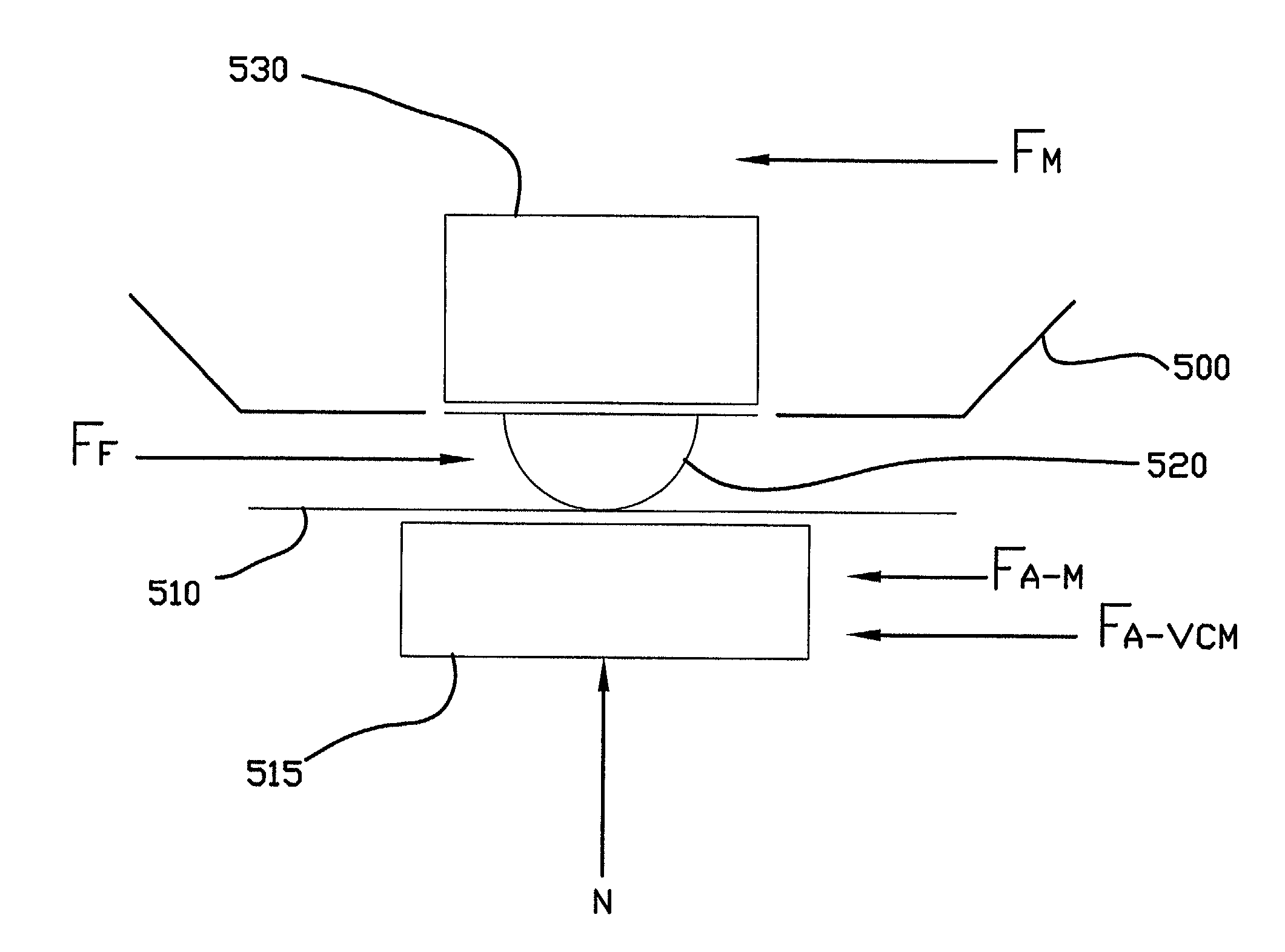Microactuated dimple for head suspensions
a dimple and microactuation technology, applied in the direction of head support, record information storage, instruments, etc., can solve the problems of reaction force excitation of undesired off-track displacement modes, the loss of a large amount of slider displacement, and the difficulty of motor and servo control system to quickly and accurately position the read/write head
- Summary
- Abstract
- Description
- Claims
- Application Information
AI Technical Summary
Benefits of technology
Problems solved by technology
Method used
Image
Examples
example
[0048]The following example illustrates that the stiction force is sufficient to resist both the static and dynamic forces acting at the dimple interface of a head slider, such as those described in the above embodiments in accordance with the present invention, under normal or standard operating conditions. Referring to FIG. 13, a free body diagram is shown illustrating a dimple interface and the corresponding forces acting upon it. In this example, a stainless steel load beam 500 is shown with a microactuator 530 mounted upon it above a dimple 520 that contacts a stainless steel flexure 510. A head slider 515 is mounted to the flexure 510 beneath the dimple 520. No modifications have been made to increase the coefficient of friction at the dimple interface.
[0049]N represents the normal force a the dimple interface, also known as the gram load. FF represents the dimple stiction force. FM represents the static force of the microactuator 530 needed to displace the slider 515 a given ...
PUM
 Login to View More
Login to View More Abstract
Description
Claims
Application Information
 Login to View More
Login to View More - R&D
- Intellectual Property
- Life Sciences
- Materials
- Tech Scout
- Unparalleled Data Quality
- Higher Quality Content
- 60% Fewer Hallucinations
Browse by: Latest US Patents, China's latest patents, Technical Efficacy Thesaurus, Application Domain, Technology Topic, Popular Technical Reports.
© 2025 PatSnap. All rights reserved.Legal|Privacy policy|Modern Slavery Act Transparency Statement|Sitemap|About US| Contact US: help@patsnap.com



